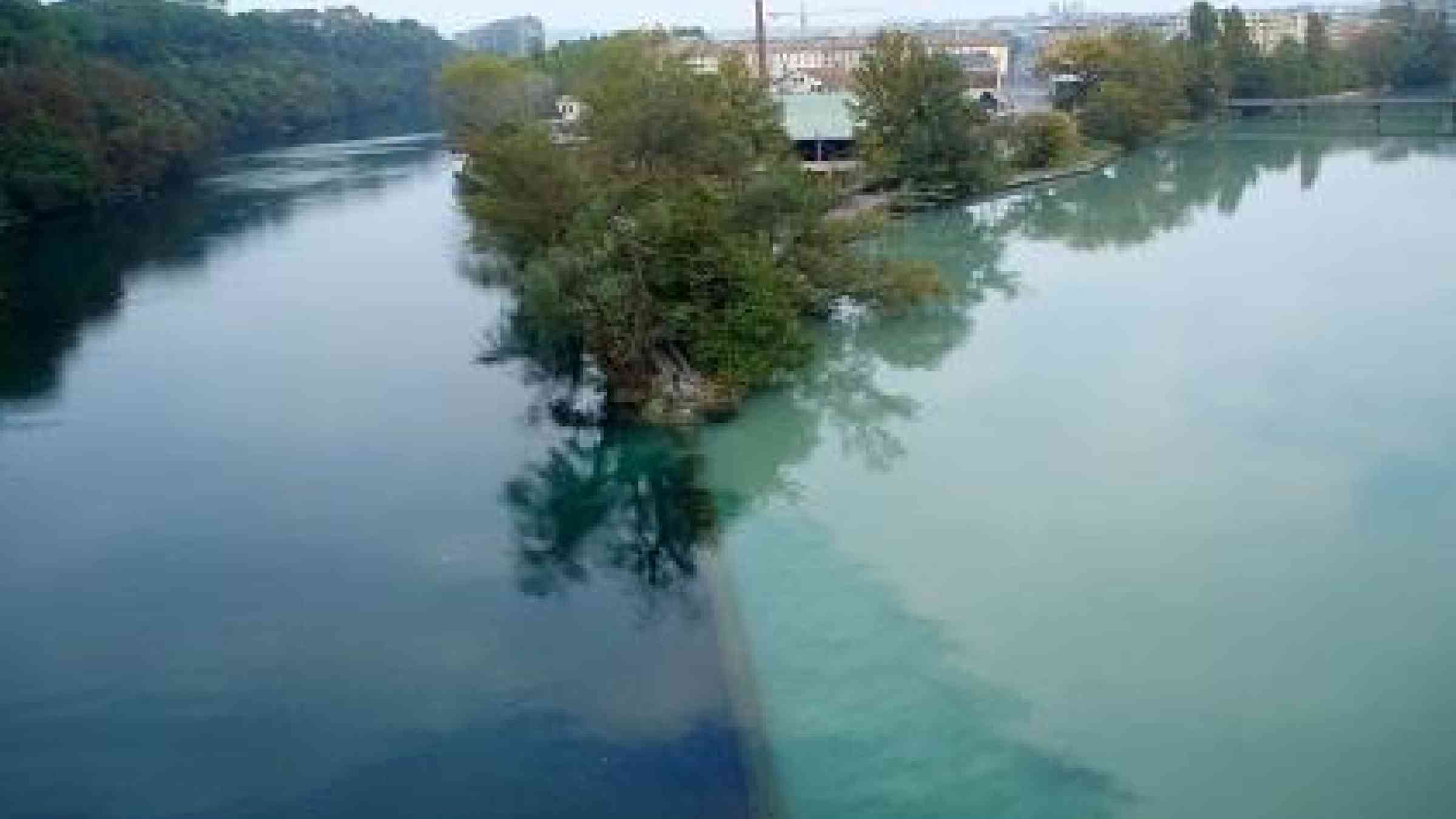Geneva’s perfect flood management

GENEVA, 5 May 2015 – The Swiss city of Geneva has been scrambling to stave off flooding as heavy rain pours down into mountain streams and swells rivers. Its success in meeting the crisis head-on underscores the importance of long-term planning to reduce disaster risk.
The key has been to work hand in hand with local authorities in neighbouring France, whose territory all but rings Geneva, with towns such as Annemasse sitting right by the border.
Geneva is Switzerland’s second biggest city and a major economic hub, home to leading banks, multinationals and start-ups, as well as hosting the European base of the United Nations. It is keenly aware of the risks posed by flooding, given its mix of densely-populated districts and critical infrastructure on the banks of Lake Geneva and watercourses such as River Rhone and River Arve.
The Arve, which rises in the French Alps and flows into the Rhone in Geneva, has swollen to levels unseen since 1968. Over the space of just 24 hours between Friday and Saturday, its per-second flow increased tenfold from 90 cubic metres to a mighty 905, sparking a red alert.
Municipal employees have worked round the clock to protect the riverside district, which is home to thousands of residents as well as the local equivalent of Silicon Valley. Bridges were closed as a precaution and the curious were warned to stay away.
“On no account must pedestrians cross the security perimeter. The risk of drowning, landslides or falling trees remains high,” Geneva police said.
While such risks persisted, and the water levels were expected to remain high for a week, the spectre of flooding in the city was gradually subsiding on Tuesday.
Avoiding a crisis has in part been a matter of good luck, because the water levels in Lake Geneva were low enough to offset those in the Arve. But the lack of fatalities or even major damage is also testimony to a forward-thinking approach that treats disasters as anything but natural, and seeks to reduce risk rather than simply preparing an emergency response.
Since 1998, Geneva and French authorities have together worked to identify and lower flood risks in the cross-border streams and rivers which represent the majority of those flowing into Geneva. A key measure has been to allow nature to take its course.
“In the past, we used to channel streams and thereby free up land for construction,” Alexandre Wisard of Geneva’s Water Department told the Tribune de Geneve, the local newspaper.
“Since then the philosophy has changed. Rather than building walls, we give streams more space in order to absorb flood waters,” he explained. “People used to think that we were doing this to protect frogs and flowers, but it’s actually a security issue too.”
The restoration of marshlands which help soak up flood waters, and the creation of overflow basins, have been other key elements of the strategy.
Over the past 16 years, the equivalent of US$75 million has been invested in projects in the Geneva area.
On the French side, meanwhile, investment on the River Arve alone has reached the equivalent of US$168 million over two decades. Part was spent on buying land to create a 600-hectare flood-absorbing zone above the community of Bonneville, and similar projects are underway.
That has not been without controversy, given that it involves freezing building rights and leaving farmland open to the risk of flooding in order to protect urban areas.
“But if we hadn’t done anything, there would have been damage. Annemasse and Geneva would have been hit, and there might even have been fatalities,” said Martial Saddier, head of the River Arve management authority.
Public awareness is an equally important part of the flood strategy, with a dedicated real-time website enabling residents to understand current and future risk.
According to John Harding, an expert at the UN Office for Disaster Risk Reduction, the fact that Geneva prepares risk maps based on estimated peak flows for a certain return period and identifies at risk zones along the river is one of the reason no lives were lost and economic damages remained low.
“Knowledge of the potential hotspots along the river without a doubt also contributed to the effectiveness of the interventions by the emergency services. The long term investments by the Swiss and the French authorities in the protection of their rivers, which among other benefits, increases their natural capacity to absorb flood waters, have probably avoided much larger destruction of infrastructures and saved a considerable amount of taxpayers money,” he said.
“It shows that cities such as Geneva, that may not be identified as at high risk to disaster impacts, are also concerned by the recommendations and guidance contained in the recently-approved Sendai Framework for Disaster Risk Reduction. Their experience and knowhow can also contribute to efforts in other cities around the world.”